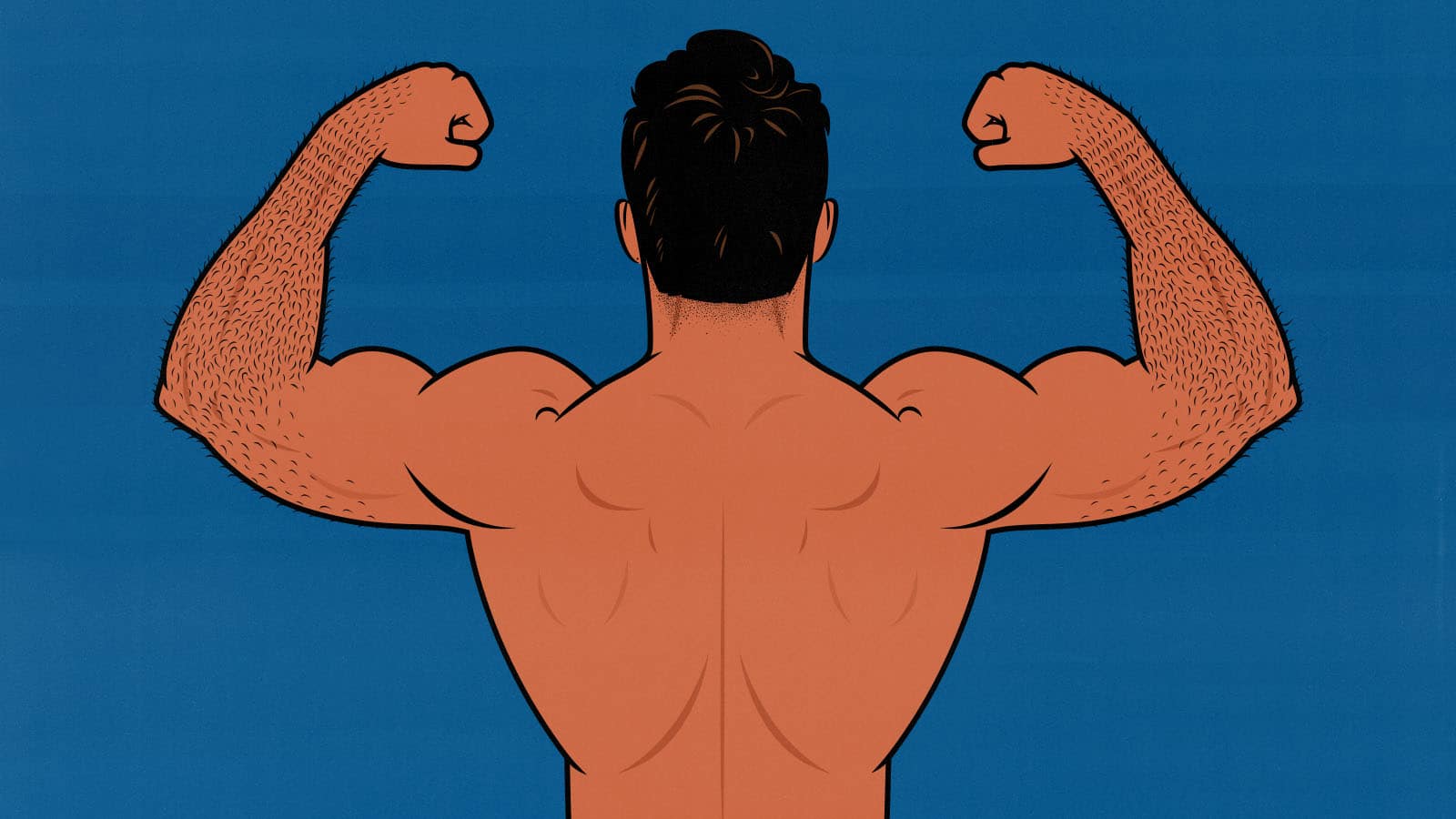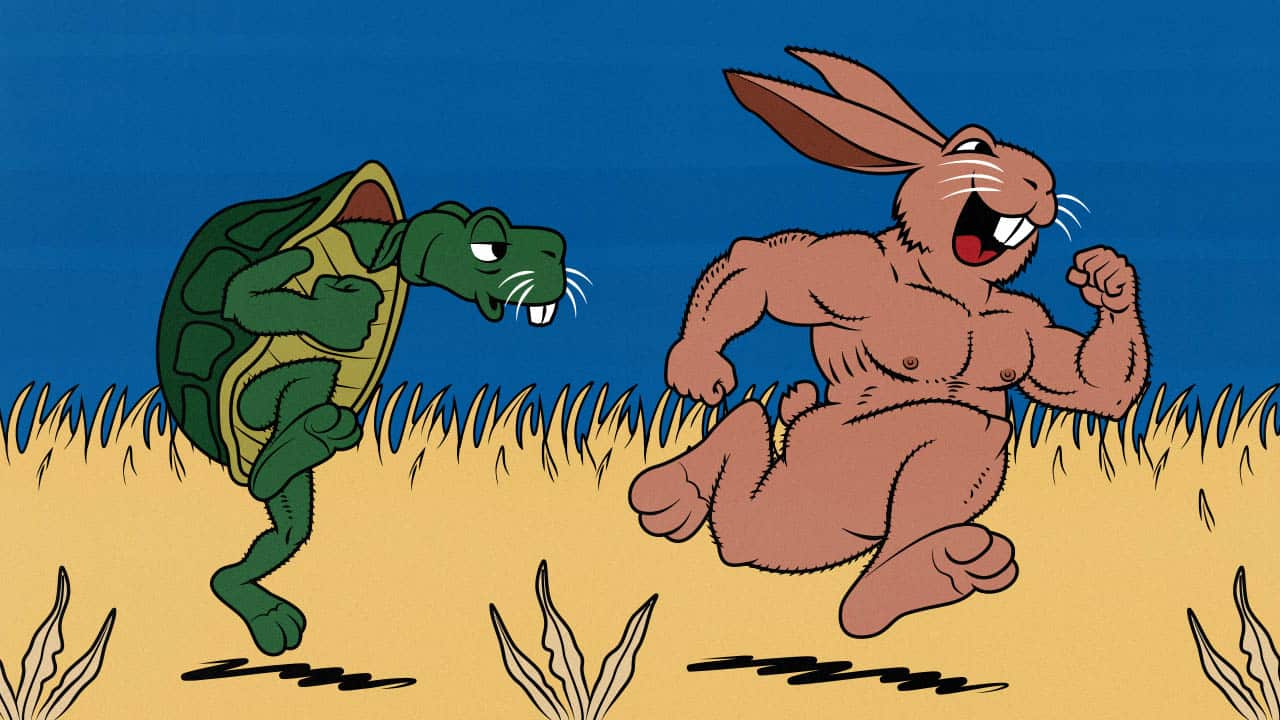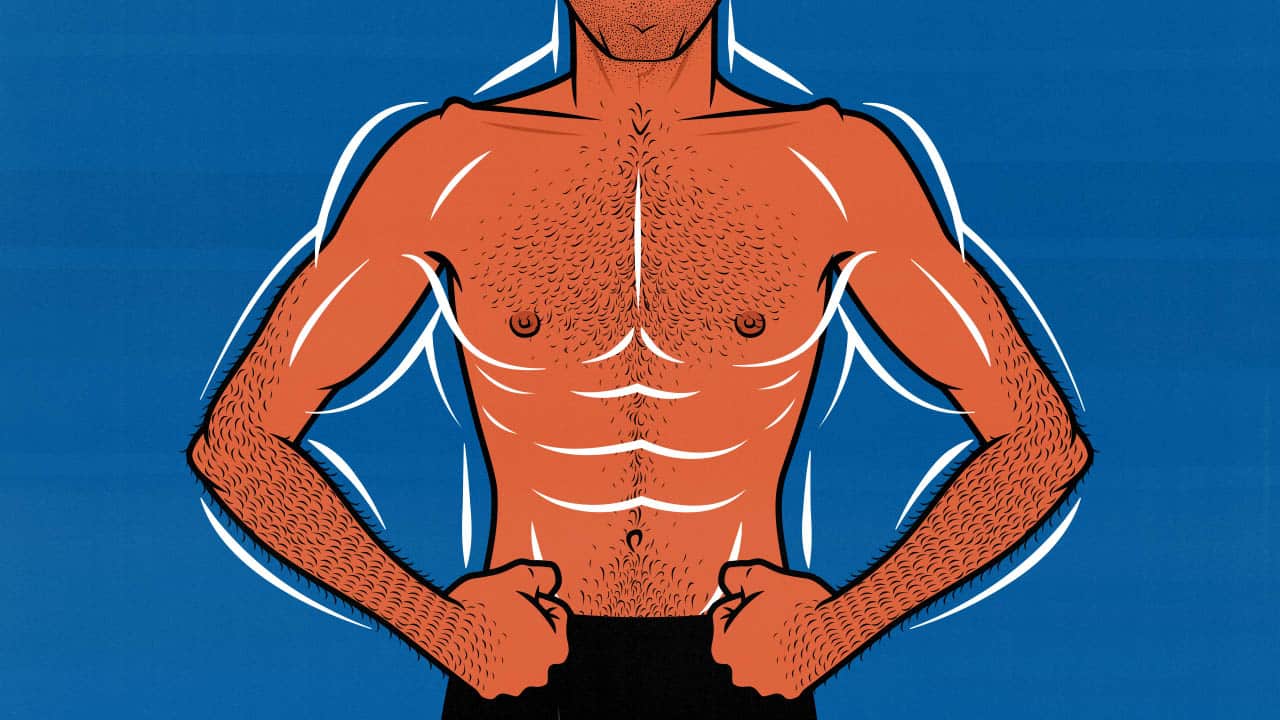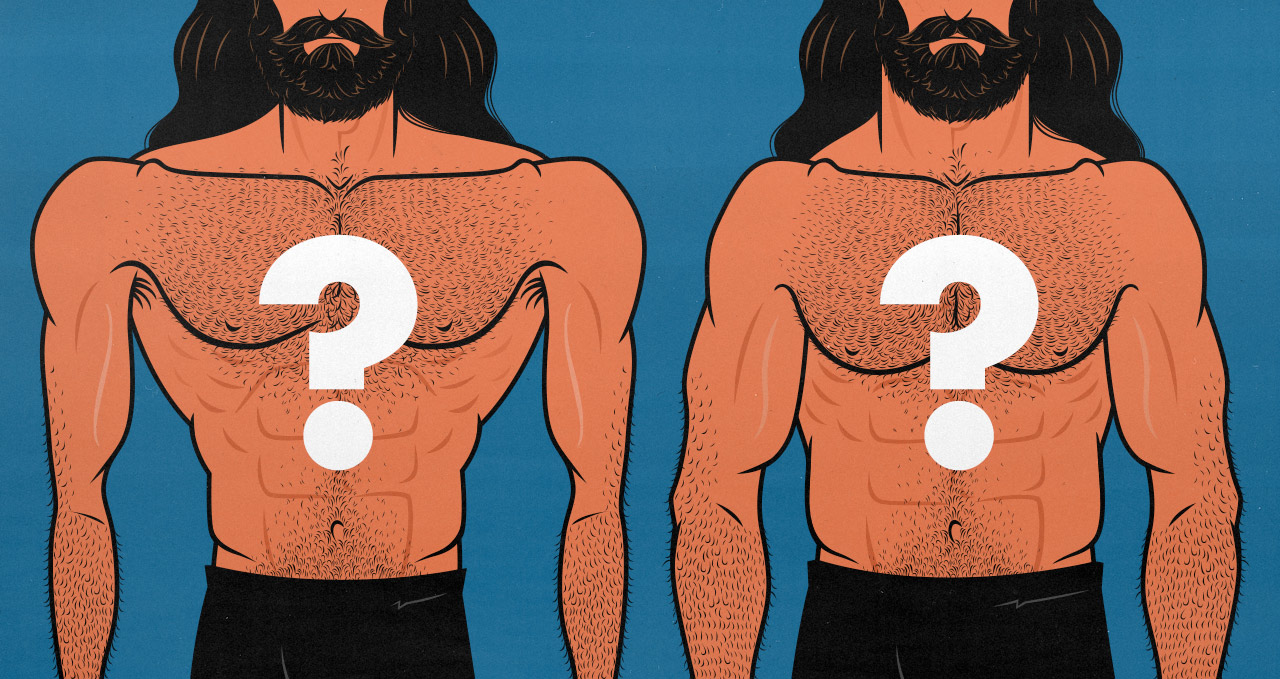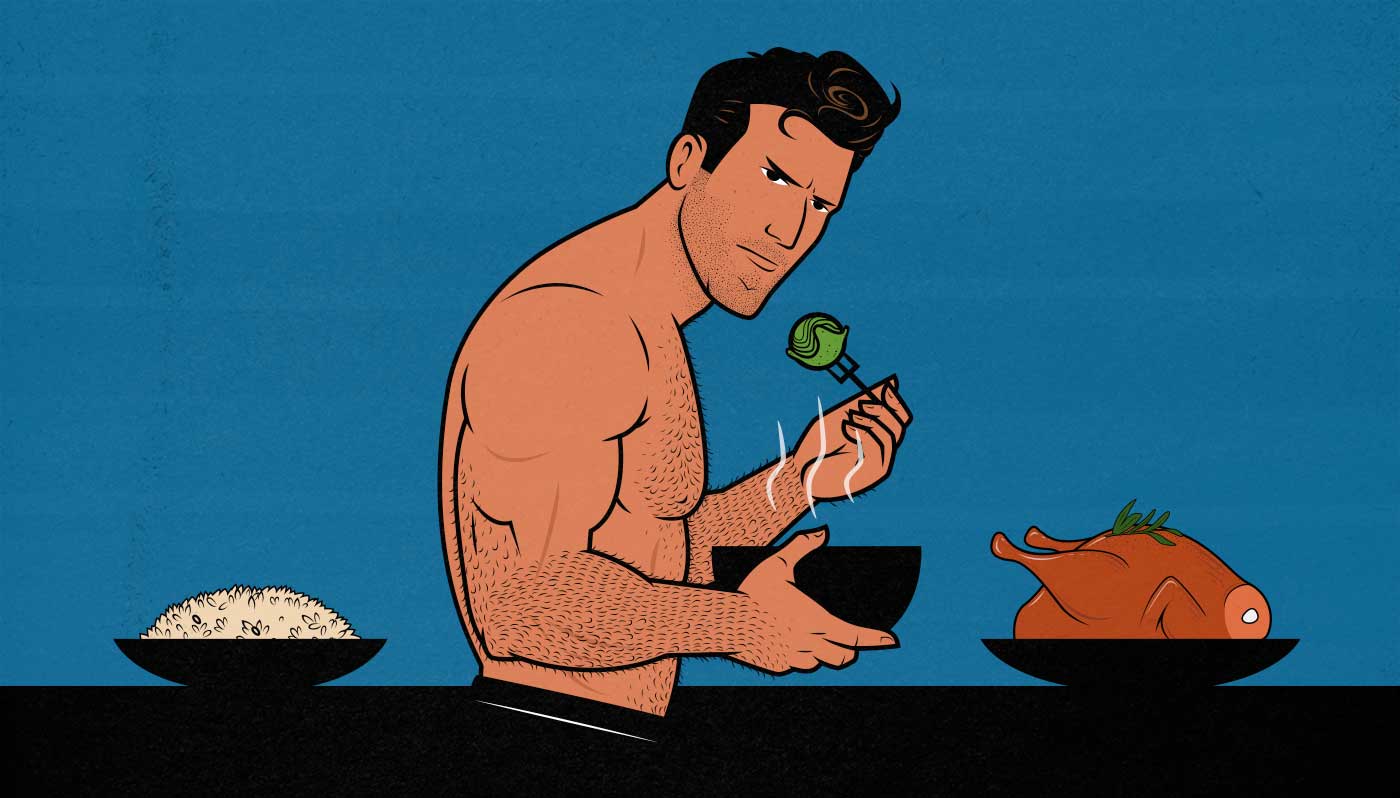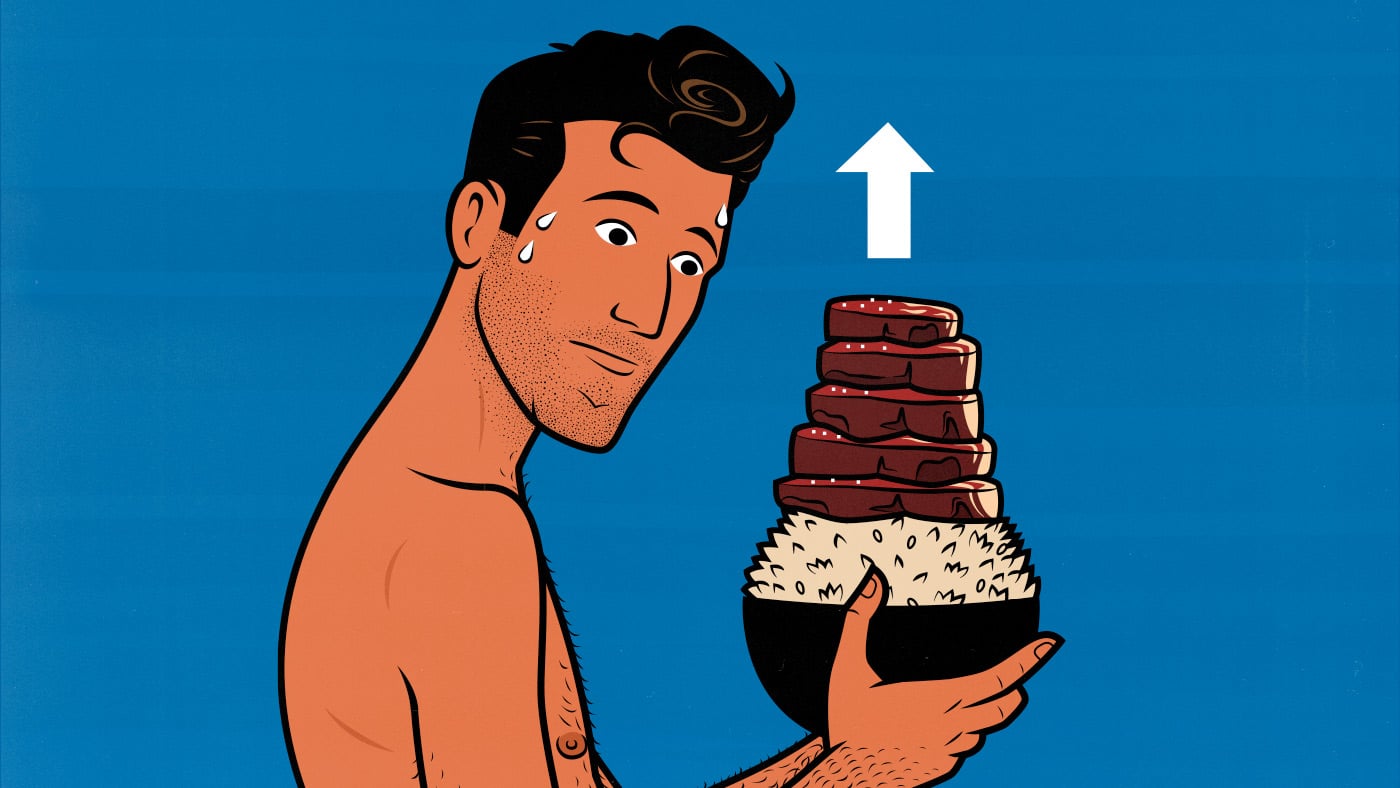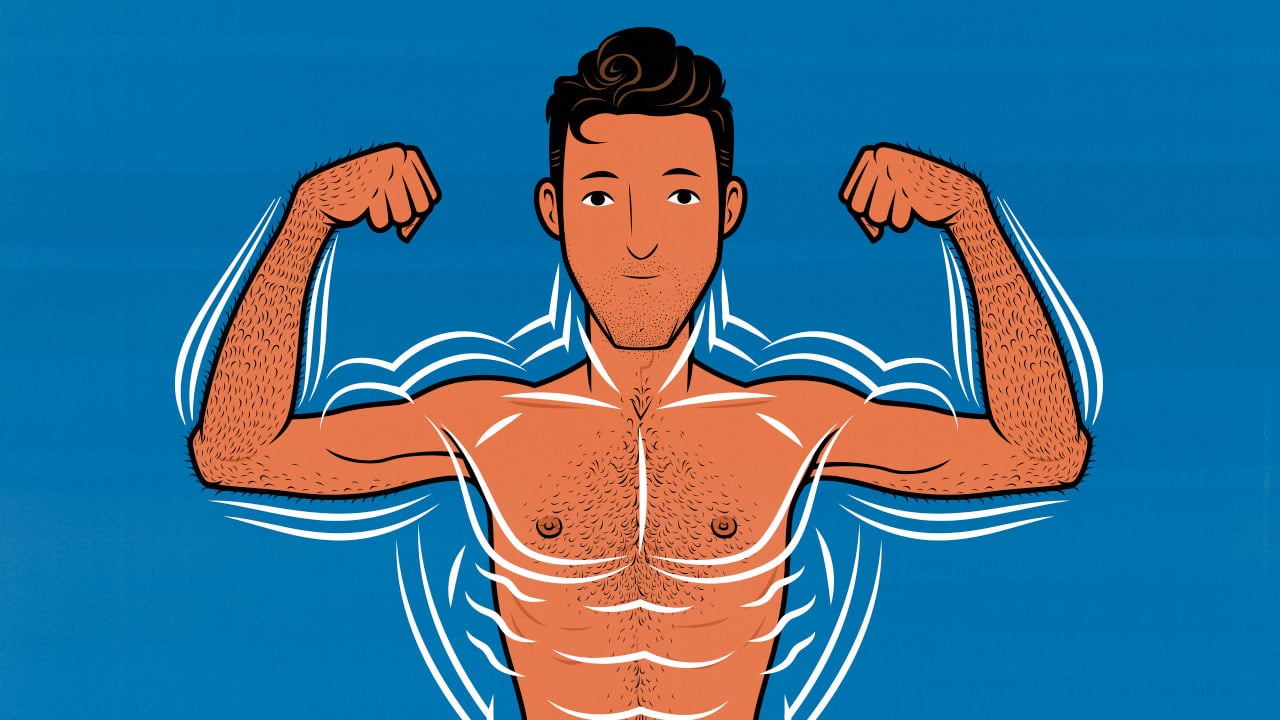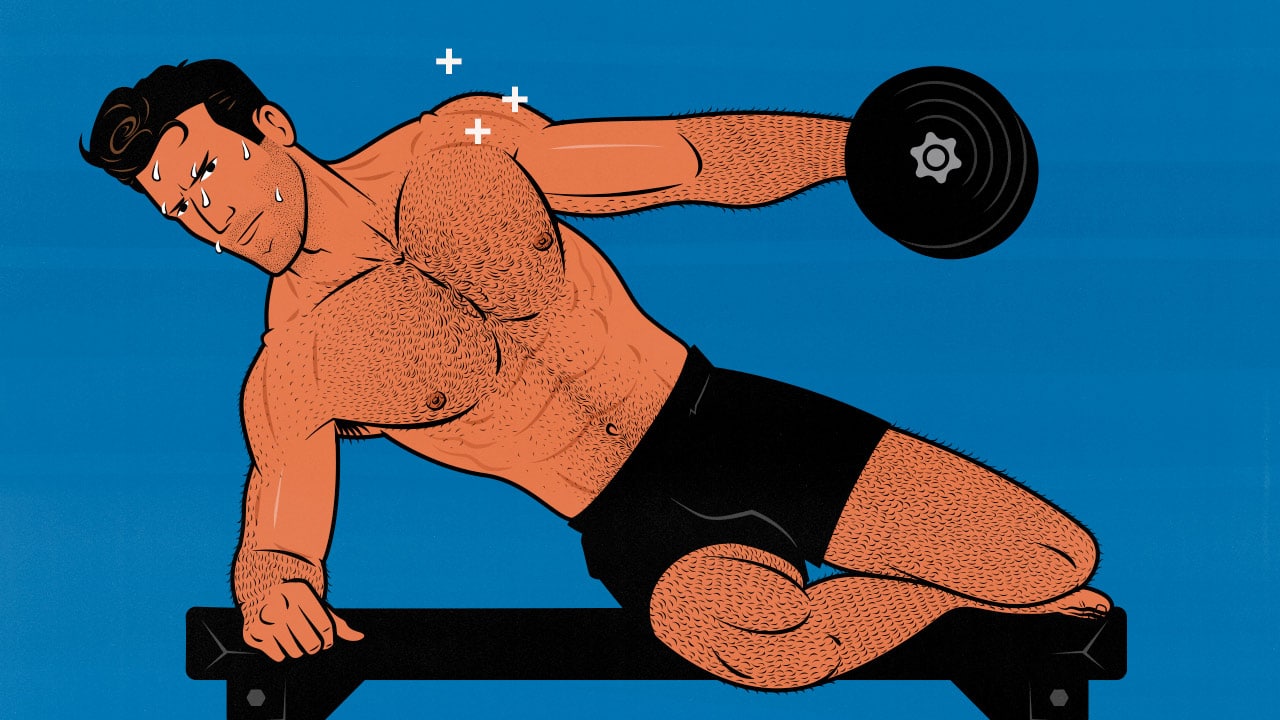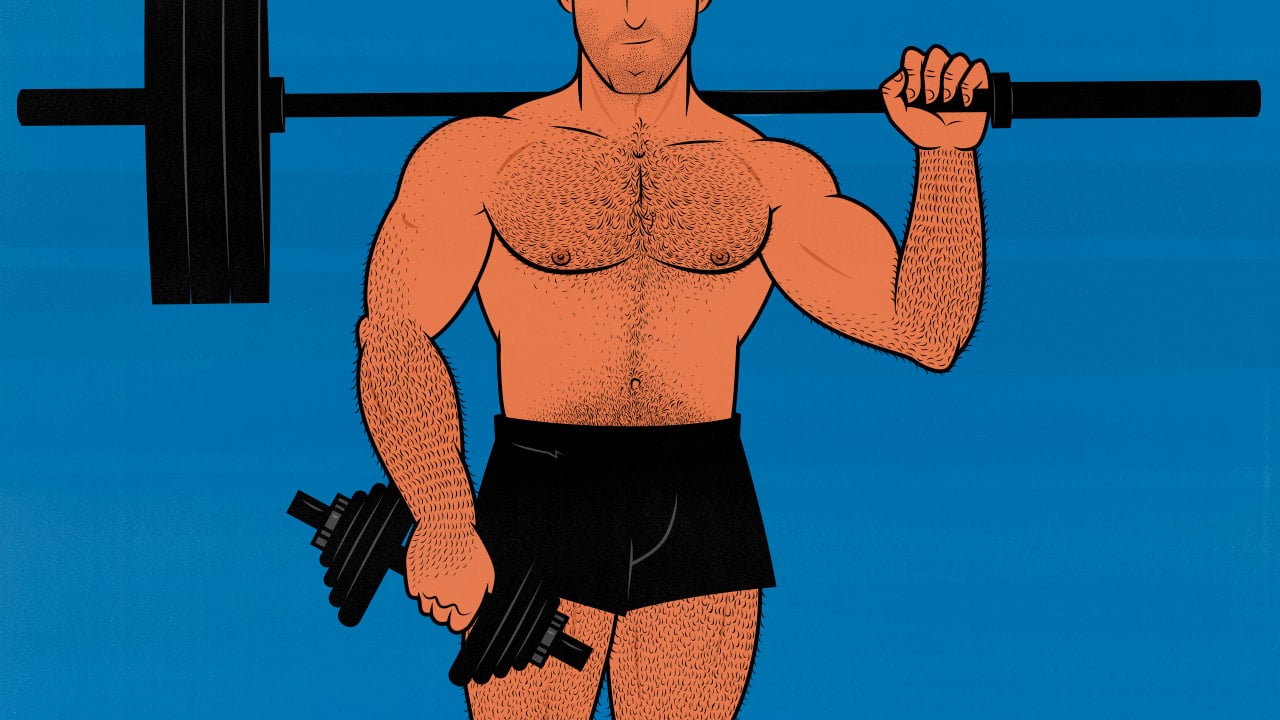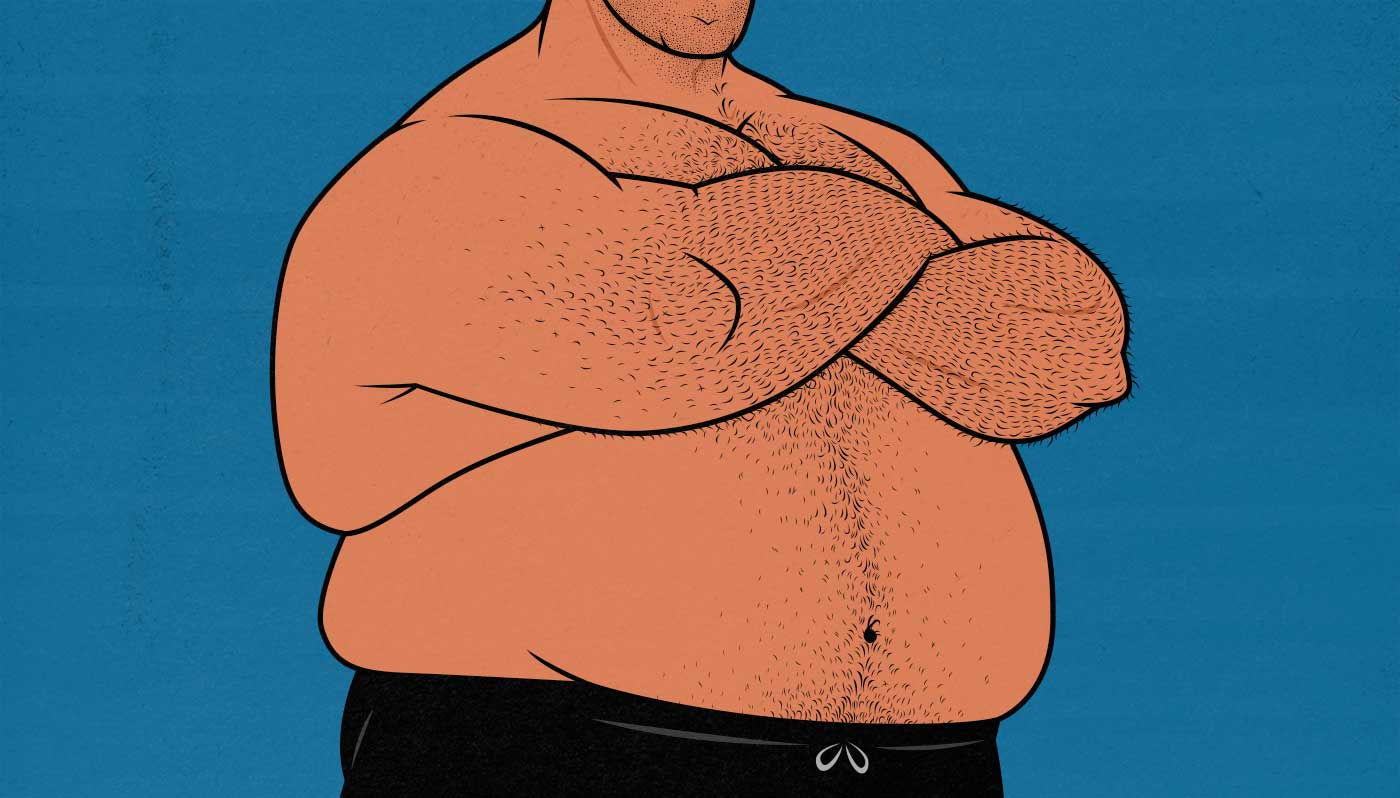Posts by Marco Walker-Ng, BHSc, PTS
How to Build a Bigger Back: The Best Back Exercises & Workout
You can build a bigger back by doing a mix of horizontal pulls, vertical pulls, and deadlifts. Your back is made up of layers of overlapping muscles, all of which can work together, but many of which have different functions.
You could divide your back into your upper back (traps, rear delts, rhomboids, and teres major) and lower back (lats and spinal erectors), but even within the same back muscle, different regions respond better to different exercise variations. For example, your upper lats have a slightly different function from your lower lats.
You train your upper back and lats by combining vertical pulls (like chin-ups) with horizontal pulls (like rows). Adding a deadlift variation will take care of your lower back, giving you a thicker back. But it also helps to consider whether you’re tucking or flaring your elbows and whether you’re stretching and contracting your shoulder blades.
Delve DeeperHow Fast Should You Gain Weight While Bulking?
Bulking faster almost always causes faster muscle growth, but if you bulk too fast, you’ll gain more fat. Bulking slower gives you a better chance of making lean gains, but you’ll also build muscle more slowly, and you might go through periods of not building any muscle at all.
Most people split the difference, bulking at a moderate pace. I didn’t. I was desperate not to be skinny anymore, so I gained weight as quickly as I could, gaining 20 pounds in 3 months (1.5 pounds per week). That’s 3 times faster than most experts recommend, but I finished leaner than when I started.
Since then, I’ve helped over 15,000 other people bulk up at varying paces and tracked their results. Most guys who want to bulk up are thin, but I’ve also coached hundreds of skinny-fat and overweight people. It’s easy to see the patterns.
There are some interesting studies we can look at, too. In particular, the famous Ribeiro study.
Read MoreWhat Does Bulking Do?
Bulking is when you gain weight to support muscle growth. Not everyone needs to gain weight to build muscle, but some people do. That’s because you need to do two things to build muscle:
- Stimulate muscle growth, usually with weight training.
- Give your muscles enough protein, calories, and time to recover and grow.
Any good muscle-building program combines those two things. What sets bulking apart is that the diet puts you into a calorie surplus—it causes weight gain.
There are many different ways to bulk, each with a slightly different purpose. If you want to build muscle as fast as possible, you can bulk aggressively. If you’re worried about gaining fat, you can bulk leanly. If you want to bulk in a healthy way, you could do a clean bulk. If you don’t care about any of that, you can do a dirty bulk.
Bulking has a controversial reputation, but I think that reputation is almost wholly undeserved. The criticism usually comes from people arguing against a specific style of bulking, then falsely applying that criticism to bulking in general. For example, someone might say that bulking will make you fat, forgetting that lean bulking exists. Or that bulking means overeating junk food, forgetting that clean bulking exists.
Let’s delve into some of that nuance.
Read MoreDo Skinny People Have Bad Muscle-Building Genetics?
I think it’s important to talk honestly about muscle-building genetics. I don’t mean that in a pessimistic “blackpill” way. Every skinny person can build muscle. I’m naturally skinny. So is Marco. We’ve each gained around 70 pounds. And over the past decade, we’ve worked with over ten thousand skinny clients, both male and female, ranging from desk workers to Olympic athletes.
But our genetics do indeed influence those results. Even among naturally skinny people, we all have different bone structures, different muscles that lag behind, and different muscles that pull ahead, causing us to build bodies that look rather different from one another.
So, I don’t think we should take the overly optimistic “whitepill” approach, either. If we don’t understand and account for our genetic weaknesses, we won’t ever succeed at building muscle.
Finally, for every genetic downside you have, there’s probably a genetic strength you can leverage. For the most obvious example, if you have a hard time gaining weight, you’ll have an easy time staying lean. That genetic leanness will be a powerful ally as you bulk up.
Read MoreBulking Diet Plan: How to Eat for Muscle Growth
This bulking diet guide covers everything you need to know about eating for muscle growth. This is how bodybuilders have traditionally bulked up, how athletes gain lean mass, and what modern science shows is the most effective way to fuel muscle growth.
Cassandra used this diet to gain over twenty pounds, I’ve used it to gain over sixty pounds, and Marco used it to gain over seventy. We also use it to help our clients bulk up, both in person and online. Those clients range from desk workers to college, professional, and Olympic athletes.
There are five parts to this guide:
- How much do you need to eat?
- What if you stop gaining weight?
- How much protein, carbs, and fat you should eat?
- What does a healthy bulking diet look like?
- What foods and meals should you eat?
Don’t expect to be shocked or thrilled. There’s nothing controversial here. These are well-known and well-studied principles with decades of tradition behind them. That’s by far the best way to get reliable results.
Read MoreThe Vertical Diet: Full Overview & Review
The Vertical Diet is a bulking diet designed to help people get bigger, stronger, and fitter. It’s supposed to make it easier to eat enough food to gain weight, thus supporting muscle growth and strength gains.
The diet is especially popular with professional bodybuilders and strongmen who use performance-enhancing drugs. Stan Efferding says he invented the diet to mitigate the harms of those lifestyles. But it’s supposed to be healthy for everyone. Is it?
We’re natural lifters, and we’re more interested in health than professional bodybuilding, but we’ve helped college, professional, and Olympic athletes bulk up. We know how to train and diet for elite performance.
Here’s our overview and review of the Vertical Diet.
Read MoreWhat’s the Best Way to Bulk Up?
There are a few different ways to bulk. You could bulk dirty or cleanly, aggressive or leanly, or anywhere in between. I’ll explain the pros and each so that you can pick the style of bulking that’s best for you.
We’ve been helping people bulk up for over a decade now, with clients ranging from geriatric deskworkers all the way to college, professional, and Olympic athletes. We can help you to do it, too. The results are incredibly consistent.
Read MoreThe Best Side Delt Exercises Are Weird Lateral Raises
The overhead press is the best overall shoulder exercise. If you want a minimalist workout routine, that’s all you need. If you really want to build bigger side delts, though, it pays to include an exercise that trains them directly.
Lateral raises are the best exercise for your side delts, and they can take you quite far, but you can do even better. Lateral raises are easy to improve upon. Here’s how.
Read MoreShould You Lift More Weight or Do More Reps to Build Muscle?
The top search result for this question is wrong, and it’s bugging me. There’s this old myth that heavier weights are better for building muscle while lighter weights are better for gaining endurance. That’s not quite right.
Both low-rep and high-rep sets can be equally good for building muscle. Anywhere from 4–40 reps per set stimulates a similar amount of muscle growth. Doing 6–20 reps tends to be a little easier and more efficient. Most bodybuilders lift right in the middle, favouring 8–12 reps.
However, different rep ranges provoke slightly different adaptations. The best way to build muscle is to take advantage of both. A balanced muscle-building program will use a mix of heavier weights and higher reps. More on that in a moment.
This begs another question: when you progressively overload your exercises, should you focus on adding more weight or adding more reps? Both can be equally good for building muscle. It all depends on what exercise you’re doing and what you’re trying to accomplish.
Read MoreDoes Bulking Make You Fat?
Bulking can make you fat if you gain weight too aggressively for too long. Eating in a calorie surplus is great for building muscle, but any calories that aren’t invested into muscle growth will spill over into fat gain.
If you’re eating so much food that you’re gaining fat, you might notice, but the changes happen so gradually that many people don’t. In our program, we solve this by having you weigh yourself every week and take new body measurements and progress photos every 5th week. We review those photos together, and we adjust your rate of weight gain.
Other guys like the extra size. They like filling out their clothes. They know they’re gaining fat, but they don’t care, so they keep eating in an aggressive surplus. I don’t have any issue with that. Most of these people never get fat enough to cause a health problem. It’s a purely cosmetic issue, and they prefer how they look when they’re bigger.
If you’re worried about gaining fat, you can do a lean bulk. If you’re already fat, the news is even better. You might be able to lose fat while building muscle.
Read More
